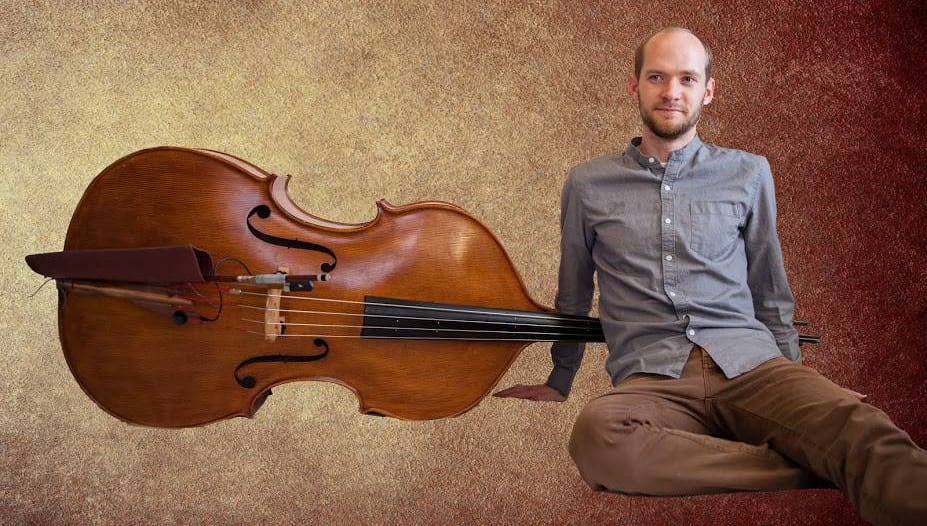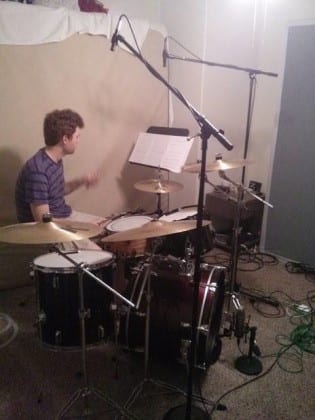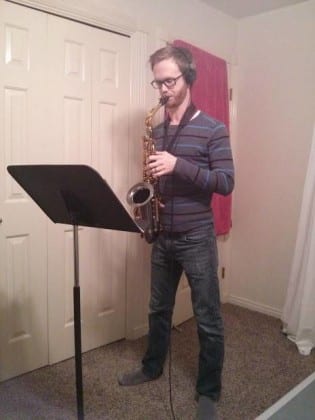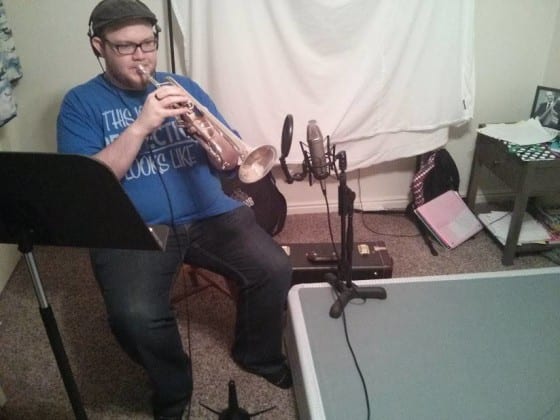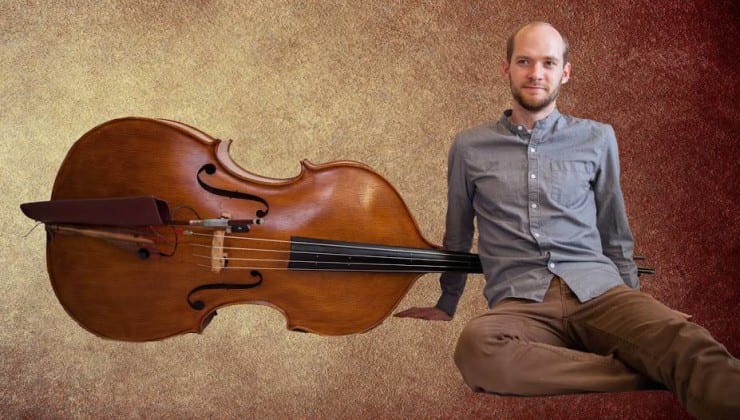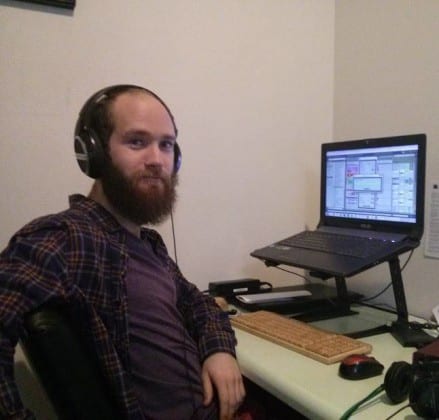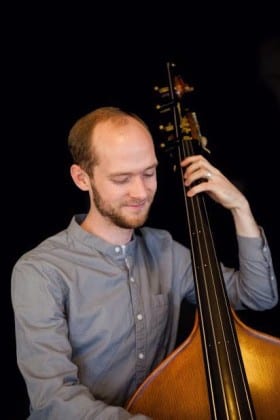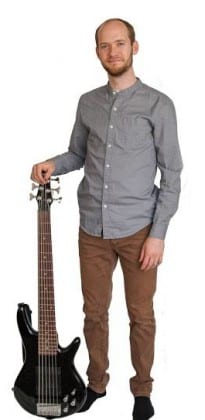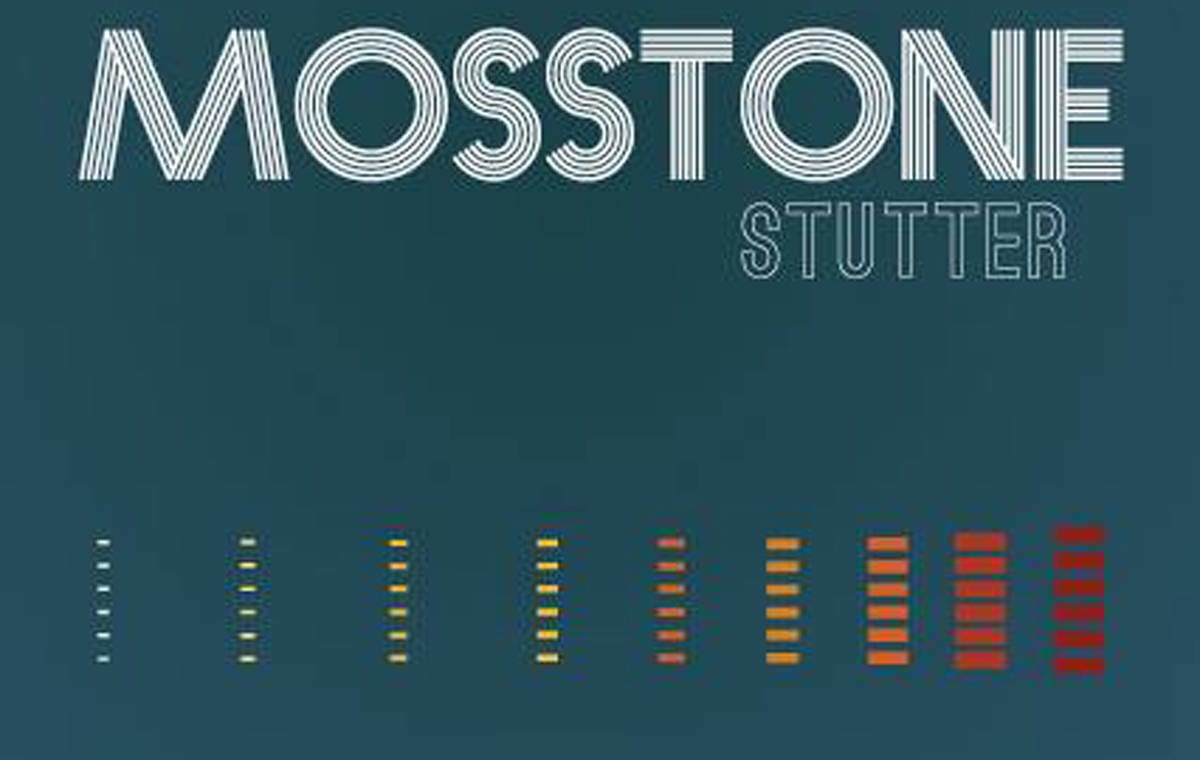
“Mosstone” is the artist name for Teren Christensen, a local multi-instrumentalist, composer, and Dixie State University alumnus. After meeting Teren in a rehearsal, he gave me a copy of his first solo album, “Stutter,” which is a genre-hopping jaunt into musical territory seldom—if ever—explored in southern Utah. Sure, Teren’s dipping his toes into the jazz pool, arguably the most neglected of popular genres in southern Utah, but what’s most interesting is that along the way, he’s incorporating some contemporary techniques that comprise the esotery of the ivory tower—and it still swings.
When all is said and done, the music I write is just for me. If others like it, that’s awesome, but I love it, and that’s what matters for me.
Jason Gottfried: So you went to DSU, right? What was your major?
Teren Christensen: Yes, I got a bachelor’s degree in music. I studied bass with Dr. Robert Matheson, a great asset to the music department and to the St. George area. Matheson—along with Dr. Glenn Webb—made my schooling there a very good experience with a lot of opportunities.
JG: Obviously you found yourself hooked on contemporary techniques like using quarter tones. I’d assume that you studied composition in some manner.
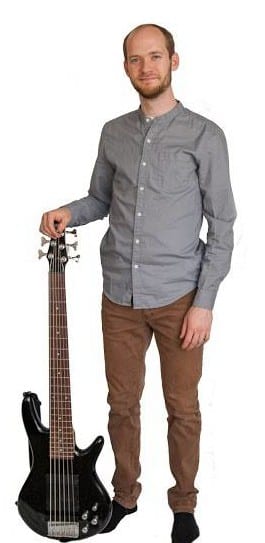 TC: I did study composition. But it was mostly on the side, not for credit. Webb gave me some composition opportunities with the jazz ensemble, and after a couple good “trial runs” with my compositions, I decided to make composition a bigger part of my musical training. So I studied a lot on the side. I would read articles and try all kinds of styles even if I had no formal training in them. We performed three of my big band compositions, and I performed a 12-tone piece of mine for my junior recital. I really got into improvisation, and that helped my compositions greatly—after a while, during composition sessions, melodies and harmonies and licks would just come into mind one after another—so it became a lot easier because of my improvisation practice.
TC: I did study composition. But it was mostly on the side, not for credit. Webb gave me some composition opportunities with the jazz ensemble, and after a couple good “trial runs” with my compositions, I decided to make composition a bigger part of my musical training. So I studied a lot on the side. I would read articles and try all kinds of styles even if I had no formal training in them. We performed three of my big band compositions, and I performed a 12-tone piece of mine for my junior recital. I really got into improvisation, and that helped my compositions greatly—after a while, during composition sessions, melodies and harmonies and licks would just come into mind one after another—so it became a lot easier because of my improvisation practice.
JG: Are there particular composers who really hooked you, maybe Penderecki or Stockhausen?
TC: There have been at times composers who have had me hooked, but the “hook” is always brief. Debussy, Tchaikovsky, and Sibelius are among favorites. But I’ve always been much more involved with jazz than anything else. My mp3 collection is probably 75 percent jazz.
JG: Oh, I kind of envisioned you sitting around the house and listening to your old Iannis Xenakis records. So jazz is what you listen to most often, huh?
TC: Jazz has been the most constant for about 10 years now. For the recent past, I have been in discovery mode, so I’m listening to all kinds of genres and fusions of genres—rap, funk, rock, instrumental metal, electronic, various equal division of the octave (edo), fusion, microtonal, experimental, etc. After so long of listening and studying classical and jazz and rock based musics—especially the more accepted traditional forms—I have just become very bored with it. So now I’m writing and listening to music that doesn’t bore me, newer elements of expression.
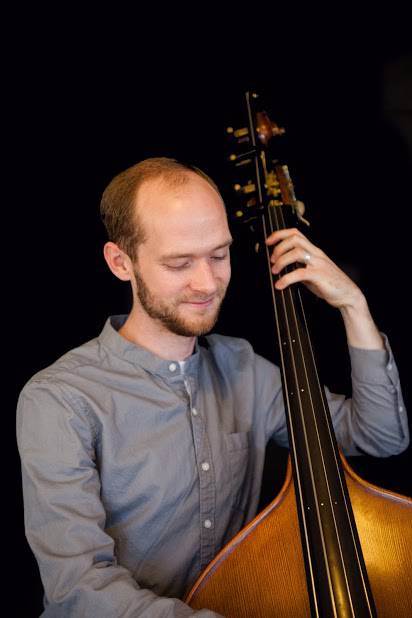 JG: You’ve got some winds and percussion going on. Are you just playing bass, or are you doubling up on other instruments some tracks?
JG: You’ve got some winds and percussion going on. Are you just playing bass, or are you doubling up on other instruments some tracks?
TC: I play all the electric and upright bass parts, cello on “Certified” and “Credentials,” and the two flugelhorn parts on “Normal.”
JG: Oh. Wow. And I assume that’s you singing, too.
TC: That’s not me singing. I wish. That’s my friend Derek Brazeau. He’s currently with Odyssey Dance Company in Salt Lake.
JG: So about these quarter tones. You haven’t totally gone off the deep end, which is maybe for the best as a purely microtonal composition would probably be hard for a lot of people to listen to. In “Credentials,” you mostly use microtones chromatically for color. (I guess that’s redundant, huh?) In “Certified” and “Mosstone,” it’s a little more pervasive.
TC: Yeah, chromatic quarter tones don’t stick out that much. I think many people might not even notice them in that capacity. “Mosstone” and “Credentials” are meant to be good introductory songs for quarter tones. There are a lot of familiar pop aspects in those songs, like a constant beat and quite a bit of repetition, that help balance the new and old.
JG: In “Melancholy,” you play your first actual bass solo. Do you have any favorite upright players?
TC: Yes. NHOP, Oscar Peterson, and Charles Mingus.
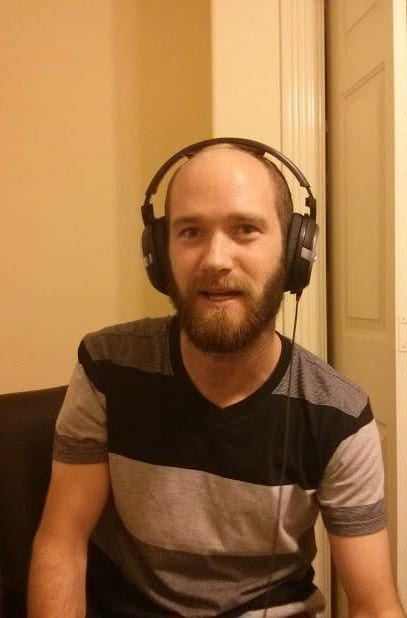 JG: “Demanding Anomaly” kind of sounds like the math rock version of some unwritten James Bond theme song, doesn’t it?
JG: “Demanding Anomaly” kind of sounds like the math rock version of some unwritten James Bond theme song, doesn’t it?
TC: I can see that. It’s inspired by rock and metal influences. I wanted a song that really rocked but that gave that opportunity to horns also. Though it’s not much of a comparison, Animals as Leaders inspired this one. I’m an instrumentalist at heart, so metal and more through-composed, complex, instrumental metal is quite attractive to my tastes.
JG: On your Facebook page, you indicated that “Certified” employs Turkish modes and rhythms. How do you execute that? Obviously, on a fretless instrument it’s easy, and you can easily flatten or sharpen a pitch on a wind instrument. But for the keyboard stuff. …
I think my mind has been so conditioned with 12-edo music that my expressive perceptions don’t pick up on much more when quarter tones are introduced. Yeah, this might change.
TC: Well, there are a few auxiliary percussion instruments (MIDI) that play the traditional Turkish rhythms throughout the song, just superimposed over the timing of the song. The mode for the entire song is called Naruz (R, 1, 2, qb3, 4, 5, b6, qb7), so basically the natural minor scale but with a quarter flat 3 and 7 instead. The trombone player and I practiced the mode, and to be honest, it didn’t take too long to get used to. The keyboard stuff was written in Sibelius, which allows for quarter tone composition and playback. After the song was written, I just pasted the MIDI file into Ableton and the quarter tones translate via pitch bends in an instant.
JG: Do you think this sort of thing is too “far out” for southern Utah? Or is this album directed toward a different audience?
TC: Yes, I do. I don’t expect many people to really dig this stuff here, and that’s okay with me. When all is said and done, the music I write is just for me. If others like it, that’s awesome, but I love it, and that’s what matters for me. I think a lot of people out there would like this—people into more experimental jazz, improvisation, and people looking for something new to listen to.
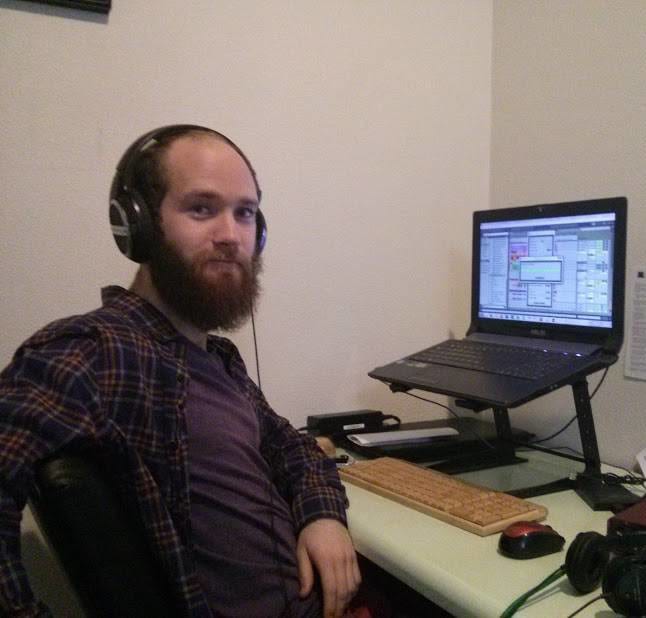
JG: How do microtonal melodies sound to you?
TC: I love ’em. I crave that new blue-note slant they give.
JG: Do you think microtonality allows you a greater range of expression or merely a different range of expression?
TC: Hmm, good question. I think it’s relative to one’s perceptions, but for most people, just a different range of expression. Perhaps if I grew up listening to microtonal music, I would perceive a greater range of expression … perhaps. I think my mind has been so conditioned with 12-edo music that my expressive perceptions don’t pick up on much more when quarter tones are introduced. Yeah, this might change.
JG: What are your plans for this album?
TC: I want to submit the pieces in competitions and have it be an avenue to get my name out there for festivals, gigs, and things like that. My brother Tyson and I recorded the album all at a home studio. We’ve been building our studio slowly and are getting some real nice equipment. The album is kind of a showcase of our studio equipment as well as our editing and mastering abilities. We’d love to record others. Also, I’d love to perform this stuff live, but the circumstances aren’t quite ripe for that currently.
JG: I have to agree, and I think that’s ultimately a testament to your ability to comfortably write and play that far outside the box. I’d volunteer, but my vibraphone only sports 12 boring pitches per octave. I know Robert Van Sice made a microtonal marimba … I wonder if he made a microtonal vibraphone. Not that I’d know what to do with it. Anyway, what are your plans for the future?
TC: I’m not sure yet. I’m thinking about grad school studying composition. I’d love to get some musicians together and get a steady group going. I’d like to tour a bit. I love sharing what I find fulfillment in.
Teren can be seen playing upright bass in jazz combos around southern Utah, in Tuacahn’s pit, and elsewhere in the area. Find Mosstone as well as “Stutter” online at Soundcloud, Bandcamp, YouTube, and Facebook.

